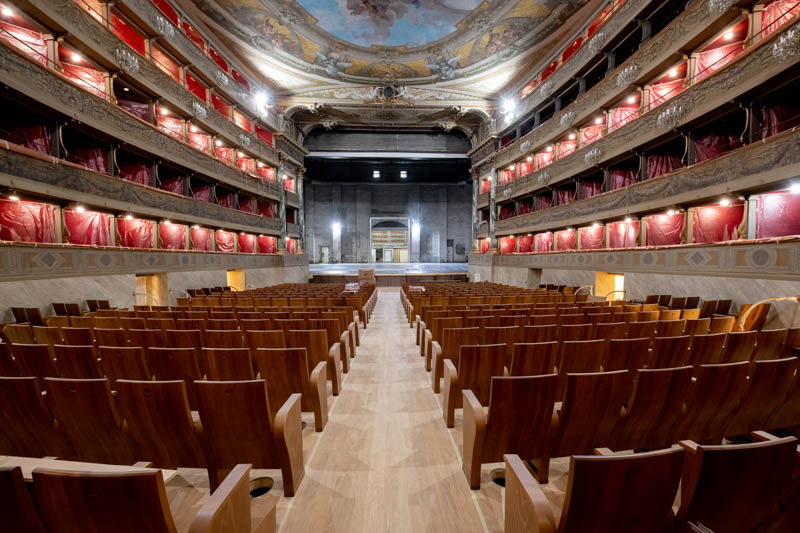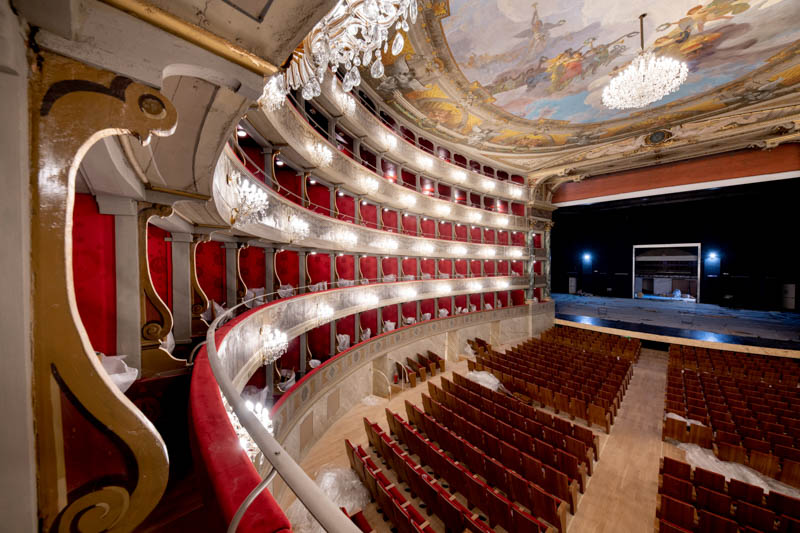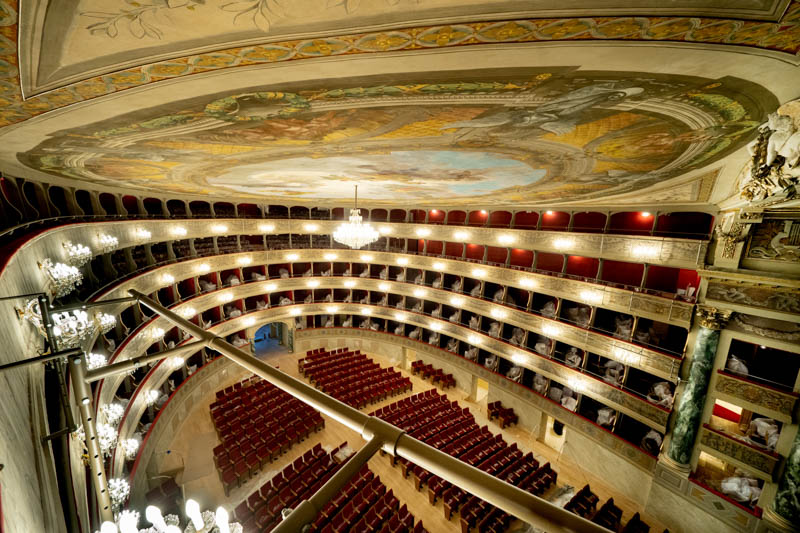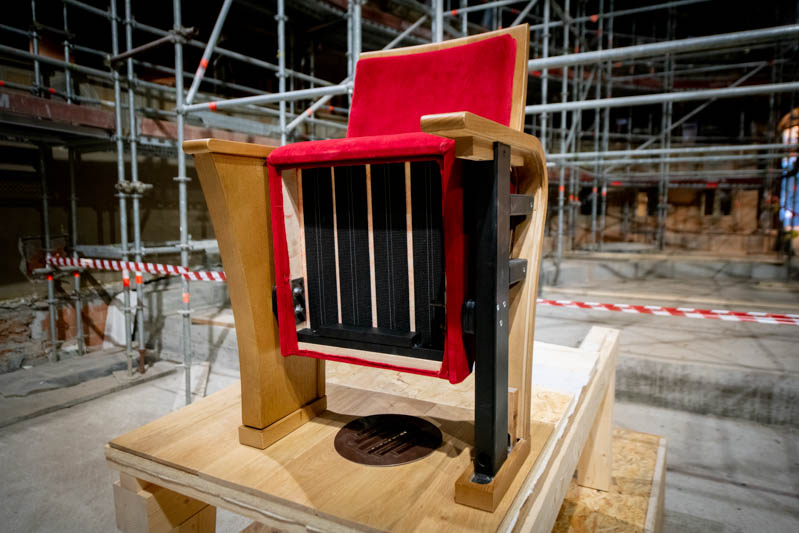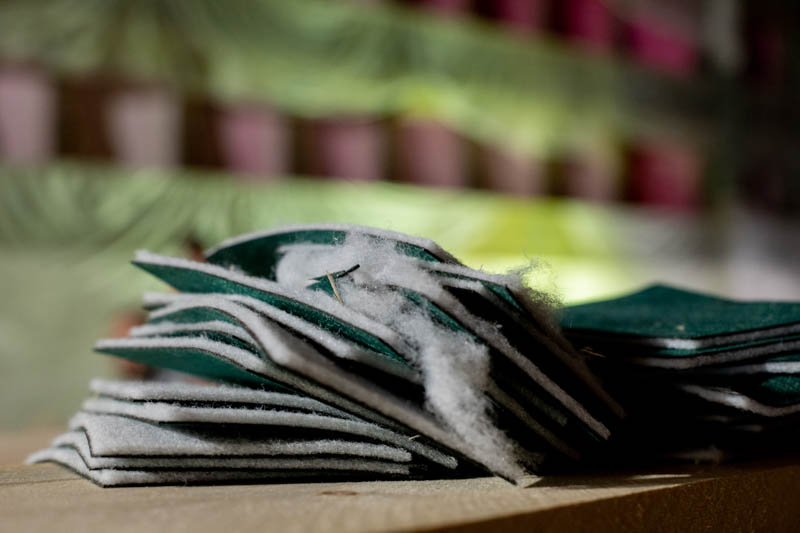For the Donizetti Theatre, restoration work on the surfaces of the auditorium was carried out taking into account acoustic requirements right from the design phase. Acoustics were of great importance in the renovation of the Theatre from the outset. The project was entrusted to the German company Müller-BBM.
Photos by Gianfranco Rota
The company studied the acoustic potential and verified the implementation of operations to optimise the Theatre’s acoustics.
The floor. The floor of the stalls was completely renewed to ensure air circulation and, at the same time, good acoustic insulation between the stalls and the basement rooms. The thin wooden floor, to which a felt strip was applied, is free of noise and creaking. The floor allows the vibrations of the music and voice to be easily transported to the audience.
The ceiling. The shape of the ceiling, mostly horizontal, is ideal from an acoustic point of view and results in a favourable and uniform distribution of sound reflections. The surface has been restored in such a way as to close cracks and porosity, an intervention that has benefited the sound. Above this ceiling, directly below the roof beams, a false ceiling was installed for fire protection of the roof structure, which is also useful for acoustic purposes.
Armchairs and stage chairs. In a hall for music or prose performances where excellent acoustics are required, the seats have a particularly important function. Together with the audience, they are the decisive absorbing surfaces in the hall and therefore have a considerable influence on the reverberation time of the room. The aim was therefore to ensure that the sound absorption power remains almost unchanged whether the room is occupied or empty. In this way it is possible to recreate during rehearsals with an empty or only partially occupied hall, almost the same acoustic conditions that would be obtained in a hall full of spectators. It was also necessary to limit the absorbing surface of the seats to the minimum necessary, i.e., the surfaces not covered by the seated person, such as the back of the backrest as well as the sides of the seats, were chosen with a sound-reflecting surface.
In the boxes, carpeting was eliminated, and the arm rests were made of hard rubber so as not to absorb sound. The upholstery was glued with a preparatory layer underneath, so the acoustics were not modified but improved.
Photos by Gianfranco Rota

